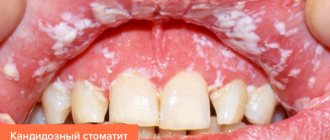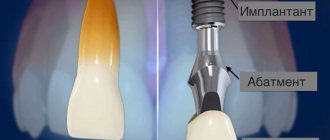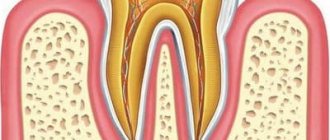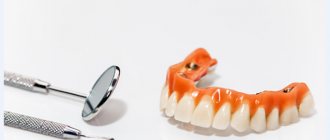Light seal: is it possible to smoke?
When can you eat after a light filling
? Can you smoke after a light filling?
Consequences of smoking after having a filling installed
Is it possible to smoke after a temporary filling?
Despite the fact that modern filling materials have excellent characteristics, the durability of the filling depends on the actions of the person himself. Of course, the doctor gives certain recommendations on what can and cannot be done immediately after dental treatment, but not everyone follows them. What consequences can this lead to and is it possible to smoke after a light filling?
Possible complications if recommendations are not followed
Recommendations and restrictions are related to the fact that certain exposures can provoke unpleasant consequences and complications. Thus, some medications and alcohol threaten the appearance of swelling or bruising on the face after injections.
Temperature effects can reduce the effect of the procedure or lead to undesirable effects (ptosis of the eyelids, impaired facial expression in individual muscles).
Massage or cosmetic procedures in the facial area can speed up the removal of the drug from the tissues, which reduces the effect of the procedure.
Following all doctor's recommendations helps eliminate the risk of unwanted effects and prolong the effect of Botox.
Our clinic address: St. Petersburg, st. Chernyakhovsky, 53 m. Ligovsky Prospekt
When can you eat after a light filling?
Today the most popular filling is light. Almost all dentists prefer it. On the first day after the procedure, the filling is extremely sensitive to any influences, since the material has not yet completely hardened. It is better to eat food after 1-2 hours, but it is undesirable to use foods and drinks containing dye, since the filling material easily absorbs coloring pigments.
What foods should be excluded on the first day after treatment:
- coffee, tea, red wine;
- beet;
- dark berries (blueberries, blueberries);
- various sauces.
Food should not be too hot or cold.
Botox injections: what are they?
The administration of Botox provokes a disruption of neuromuscular conduction, temporarily blocking the flow of nerve signals from muscles or glands. The use of this procedure allows you to relax the muscles, which helps smooth out facial wrinkles and creases on the face, reduce the work of the sweat glands, eliminating hyperhidrosis (excessive sweating).
The drug is administered subcutaneously or intramuscularly, after preliminary consultation with a doctor and a thorough examination of the injection area. The procedure takes from 5 to 20 minutes, there is practically no pain, and if necessary, superficial skin anesthesia is used. The recovery period is short, the result is noticeable after 2-7 days. But any impact on muscle fibers or nerve endings in the injection area can change the result and cause side effects, so it is important to follow a number of prohibitions and recommendations.
Is it possible to smoke after a light filling?
Many owners of a bad habit immediately light a cigarette upon leaving the dentist. What consequences can this lead to? During treatment, for example, caries or periodontitis, the structure of the teeth is disrupted, and sometimes the mucous membrane can be injured. Tobacco smoke negatively affects the healing and enamel of teeth. In addition, nicotine, reacting with filling materials, negatively affects their properties. Therefore, after treatment, it is better to give up cigarettes for at least a couple of hours, or better yet, for a day. This will help the tissues recover faster and the filling to become stronger.
Time limits after Botox injection
After the procedure, avoid drinking hot drinks and hot, spicy foods for several hours. They promote blood flow to the oropharynx and partially to the facial tissues. This is especially important for injections around the nose and mouth.
Reschedule your visit to the dentist 4-5 days after Botox injections in the nasolabial folds or tissues around the mouth.
Try to avoid stressful situations, worries and worries. They affect facial expressions, causing you to wince and frown. This may affect the distribution of the drug in tissues.
What types of anesthesia are there?
- Local. A small area of the body becomes “numb” and stops feeling pain. There are special ointments, gels, sprays, subcutaneous injections (injections). During local anesthesia, the patient remains awake. This type of anesthesia is used during minor procedures such as breast biopsies (where a sample of cells must be taken by inserting a needle).
- Regional. This type of anesthesia numbs any part of the patient's body, for example, a leg, arm, or lower half of the body. One type of regional anesthesia is spinal: with an injection into the lower back, the doctor “turns off” the sensitivity of the legs or abdomen for surgery on them. Another type is epidural anesthesia, which is often used to relieve pain during childbirth and also during and after surgery. During regional anesthesia, the patient also does not sleep, but the doctor may additionally prescribe sedatives (calming agents), which make the person relax and may fall asleep. Sedatives are injected into a vein using an injection or catheter.
- General (anesthesia) . This type of anesthesia turns off the patient's consciousness. You see nothing, hear nothing, feel no pain, your muscles completely relax, and after the operation there are no memories of it. Some types of general anesthesia are given intravenously, sometimes it is a gas that you are given to inhale. Sometimes a breathing tube is inserted into a sleeping patient's throat.
General anesthesia is always performed by an anesthesiologist. Before the operation, he talks with the patient and asks him questions:
- Do you have any health problems?
- What about the teeth - do you have artificial ones, are your own ones loose?
- What medications are you taking (including supplements, herbs)?
- Do you smoke, drink, or take drugs?
- Are there any allergies to food or medications?
- Have you or your family had complications during anesthesia?
The type of anesthesia you receive will depend on both your answers to these questions and the type of surgery you need to have. Sometimes the specific type of anesthesia is chosen by your surgeon. Sometimes you will be asked to choose between several types of anesthesia.
Your anesthesiologist will tell you what type of anesthesia you will have and answer any questions you may have. During the operation, he will monitor how your body reacts to the intervention, your breathing, blood pressure and heartbeat to make sure you are not in pain. If you are under general anesthesia, the anesthesiologist will ensure that you do not wake up during the operation.
How long after surgery can I drink?
How soon can you drink alcohol after surgery? This question is extremely individual and depends on many factors. That is why your lechen doctor will be able to tell you the exact date, and most likely not immediately after the operation, but depending on how your body recovers. There are only approximate recommended times:
- After operations related to gynecological problems, you should not drink alcohol for two months.
- When the gastric bladder is removed, the patient will have to give up alcohol forever.
- Special attention should be paid to heart operations. If everything went well and the pathology is completely eliminated, the patient will be able to drink no earlier than in a month. But if you violate this instruction, there is a high risk of causing complications.
- For eye diseases, the interval after correction should be at least 4 weeks. Sometimes the patient is prohibited from drinking for 3 months. Such restrictions are associated not only with the recovery period, but also with the drugs that need to be used after surgery. Almost all of these drugs are incompatible with ethanol.
- After plastic surgery, it is not recommended to drink alcohol for three weeks in the absence of complications and pathologies.
- If we talk about malignant tumors, then everything depends on the specific clinical case and the characteristics of the patient’s body.
- When thinking about whether it is possible to drink alcohol when the thyroid gland is removed in the postoperative period, it is better to abandon this idea. It is necessary to completely avoid strong drinks, as their periodic intake will begin to destroy the body. Drinking will provoke the development of pathologies of the liver and blood vessels and will affect all systems. Taking it will also negatively affect brain function.
What are the side effects of anesthesia?
After spinal or epidural anesthesia:
- numbness for several hours;
- difficulty urinating (the doctor may put a catheter on you, but after a few hours you will be able to urinate on your own);
- in rare cases, a headache may occur (it is called “spinal”), which lasts several days, is removed with painkillers and goes away on its own.
After general anesthesia:
- after waking up, you may feel a little “off” - as if not entirely sober or slightly disoriented;
- Nausea and vomiting may occur; your doctor will give you medicine to help relieve these symptoms;
- sore throat - if you have had a breathing tube inserted. It usually goes away quickly.
After certain conditions and surgeries, patients may experience breathing problems. Usually in these cases they are left on a ventilator for some time and sedated. Before the operation, the anesthesiologist will warn you about possible breathing problems in your case.
Botox: recommendations and contraindications after the procedure
When a patient decides to undergo rejuvenation using botulinum therapy and goes to a cosmetologist’s office, it is very important that the specialist warns him in detail about the restrictions after Botox and provides a full list of recommendations. Not only the effectiveness, but also the safety of the technique depends on how detailed this consultation is. At the same time, such a scrupulous approach should not frighten a person, because we are talking about the simplest precautions after Botox injections, the implementation of which does not require significant effort.
First of all, it is worth saying that Botox injections can be classified as “weekend cosmetic procedures” that do not require a long recovery period from the patient and do not limit performance. The duration of the procedure does not exceed half an hour, and recovery is not accompanied by severe pain or discomfort. At the same time, the minimal trauma of the technique is achieved by using local anesthesia and the use of ultra-thin cannula needles that do not leave marks on the skin.
So, you leave the cosmetologist’s office already young and beautiful and all that remains is to find out what not to do after Botox injections.
Are cosmetic procedures after Botox safe?
Many patients are interested in how much the use of Botox limits cosmetic skin care and when they can return to their usual beauty procedures. In addition, we should separately highlight some procedures that are perfectly combined with botulinum therapy, enhancing the rejuvenation effect.
- Is it possible to do a facial massage after Botox? Facial massage after Botox can cause uneven distribution of the drug in the muscles, so such effects should be avoided for 24 hours after Botox administration. It is advisable not to touch your face or use cosmetics during this period in order to protect yourself as much as possible from the development of side effects;
- Is it possible to do biorevitalization after Botox? Injection of hyaluronic acid into subcutaneous structures, which in cosmetology is called biorevitalization, helps moisturize and rejuvenate the skin. Moreover, this procedure is perfectly compatible with Botox injections and can be performed even on the same day;
- Is it possible to peel after Botox? As for peeling effects, it is still better to refrain from combining it with Botox for 24 hours. This is especially true for aggressive types of peeling, such as microdermabrasion.










